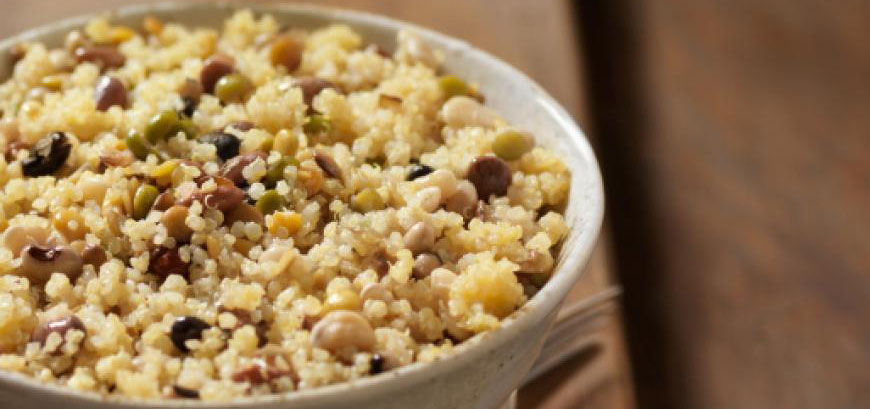
We've all heard the expression "super foods," but there is no one food that will single-handedly improve a poor diet or magically stave off chronic illness. Physicians and nutrition experts agree that eating a variety of fruits and vegetables — the more colorful the better — as well as avoiding sodium, animal fat, and refined flour and sugar are more often the key to achieving good health.
Certain foods provide greater health benefits per serving, to such an amazing extent that we refer to them as today’s super foods.
1. Raw Nuts
When you eat them in moderation, raw, salt-free nuts like almonds, walnuts, cashews, and pecans provide high levels of fiber and omega-3 fatty acids. They're loaded with vitamins and minerals like iron, magnesium, and calcium.
Nuts can lower your risk of coronary heart disease and stroke, especially when you use them as a protein substitute for red meat. Based on data from a Nurses' Health Study, the Harvard School of Public Health estimated that substituting the fat from nuts in place of carbohydrates reduced coronary heart disease by 30 to 45 percent.
Just one serving of raw nuts daily (about 1.5 ounces) can offer amazing health benefits. Add crushed nuts to salads, vegetables, or eat them on the go as a stand-alone snack.
2. Berries
Strawberries, blueberries, cranberries, and raspberries are loaded with fiber, vitamins C and E, and plant compounds called phytochemicals, which can help lower your risk of developing chronic diseases, including Alzheimer’s.
For years scientists have known that the natural antioxidants in blueberries and strawberries can help the body curb the stress that comes from aging, but a study conducted by the National Institute on Aging and published in The Journal of Neuroscience indicated that eating blueberries can also improve short-term memory, eyesight, and even balance and coordination.
One cup of berries daily is enough to tap into their health benefits. Add berries to cereal, yogurt, or in a smoothie. Dried cranberries make a wonderful addition to cereals, muffins, and trail mixes.
3. Salmon
Few foods deliver as beneficial a dose of omega-3 fatty acids as salmon does. While low in calories and saturated fat, salmon packs a high protein punch per serving and is high in B vitamins and selenium, a mineral essential for a healthy immune system.
Research supporting the health benefits of salmon is comprehensive. Not only can salmon decrease the growth of artery-clogging plaque, it can also decrease harmful triglyceride levels, protect against dangerous blood clot formations, and lower blood pressure. A 2008 study in the journal Neurology reported a 35 percent decrease in risks for developing Alzheimer’s and dementia for those who ate salmon twice a week.
Whenever possible, purchase wild salmon instead of farm-raised varieties, which are higher in fat and may contain carcinogenic chemicals called polychlorinated biphenyls (PCBs). Serve salmon baked or broiled. Cold salmon leftovers are great to top salads and smoked salmon on a bagel with cream cheese is a New York deli favorite.
4. Beans
Legumes like peas, lentils, and beans are high in protein and low in fat. They are good sources of potassium, iron, and phosphorus, and are an excellent source of soluble fiber, which can help reduce blood cholesterol and maintain healthy blood sugar levels.
According to researchers at the University of California at San Francisco, eating a high fiber diet may help eliminate toxic compounds and carcinogens from the body, and beans are an excellent fiber source.
High-fiber diets — 25 to 35 grams daily — can also help people lose weight and maintain a healthier weight over time.
Beans are perfect substitutes for red meat. Add them to whole grain pastas, salads, stews, and soups, and keep both canned and dried varieties readily available.
5. Broccoli
Fresh, leafy green vegetables are usually more flavorful and vitamin-rich than canned or frozen varieties. Broccoli is among the healthiest, as it contains vitamins A and C as well as folic acid, which is essential to protect against fetal birth defects.
Broccoli, a cruciferous vegetable like cabbage and cauliflower, contains a cancer-fighting agent called sulforaphane. In a 2007 study conducted at the Roswell Park Cancer Institute in Buffalo, New York, people who ate at least three servings of raw vegetables per month decreased their risk of developing some cancers by 40 percent.
Broccoli is best for when you eat it raw or slightly steamed. It’s a great addition to salads, quiche, soup, and stir-fries. Toss left over broccoli into your morning eggs or use some florets as a quick pizza topper.
6. Quinoa
The South American quinoa grain has surged in popularity thanks to its wonderful health benefits. Because it’s a whole grain — not a refined or high-processed carbohydrate like white rice or white pasta— it’s a fine substitute when you're trying to lose a few pounds. Quinoa is flavorful, easy to digest, gluten-free, and high in protein, calcium, and the B vitamins.
Quinoa is a very useful grain if you have type 2 diabetes, because it provides all of the protein and satisfaction as a bowl of rice or pasta without spiking blood sugars. According to the 2007 Physicians’ Health Study, daily servings of quinoa and other whole grains lowered the risk of heart failure by 29 percent.
Prepare quinoa the same way you'd cook rice, but first you have to remove the toxic outer coating, called saponin, by rinsing it in water. Cooked quinoa is also an excellent breakfast cereal, much like hot oatmeal.
7. Green Tea
Often singled out for its medicinal benefits, Asian nations have touted the health benefits of green tea for more than 5,000 years. Green tea leaves contain EGCG (epigallocatechin gallate), an antioxidant that is believed to reduce the risk of cancer and boost metabolism.
While the U.S. Food and Drug Administration stops short of endorsing the health benefits of green tea, there is evidence to suggest that it may help protect against certain autoimmune disorders, decrease the risk of some cancers, and help prevent diabetes.
Brew green tea as you would any black tea, but use tepid (not boiling) water.
